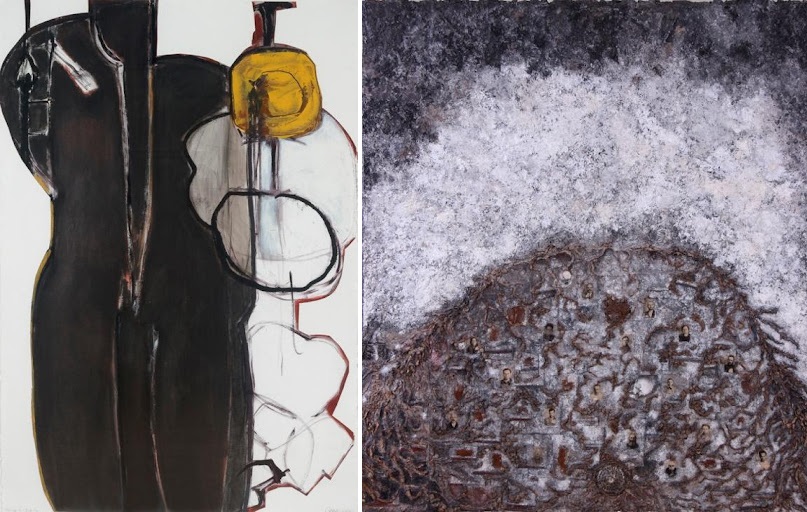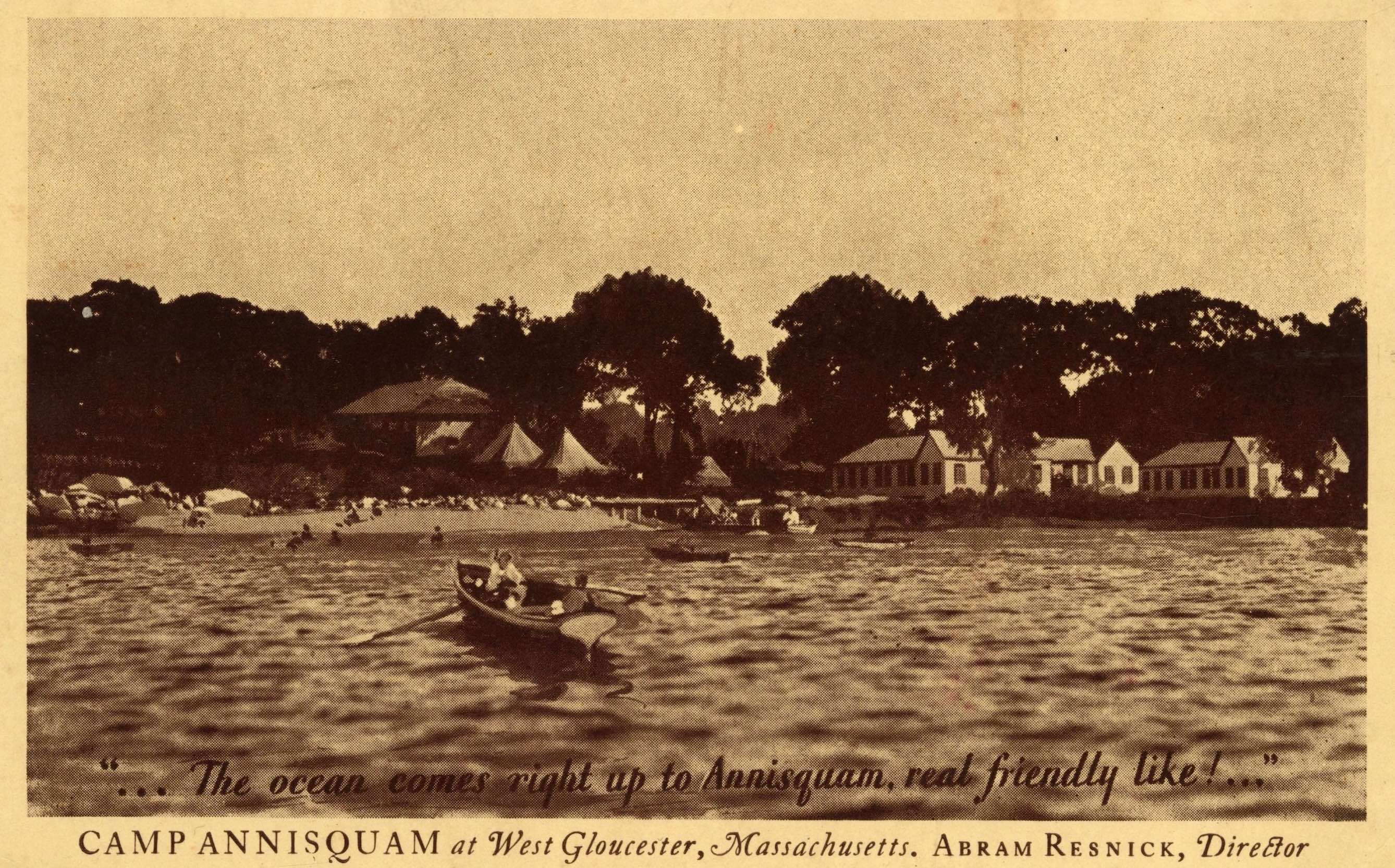
(Left) Ruth Mordecai, Homage to Matisse, 2016, mixed media on paper (collage, oil, graphite), 64 x 46.5 inches. Collection of the Cape Ann Museum, Gloucester, MA. Museum purchase, 2017, with funds provided by the Kanter Kallman Foundation [Acc. #2017.042.1].
(Right) Susan Erony, My Father’s Coat, 2001, mixed media on canvas (collage, paint, photographs, burnt paper, cloth taken from the artist's father's coat), 68 x 58 inches. Collection of the Cape Ann Museum, Gloucester, MA. Gift of the Artist, 2001 [Acc. #2001.62].

Dear Friends,
With the start of Rosh Hashanah later this month on September 25, this issue of CAM Connects celebrates the Jewish history of Cape Ann. While many of us may be familiar with Jewish painters who have long found inspiration on Cape Ann - from Theresa Bernstein and William Meyerowitz, to Mark Rothko, to Harold Rotenberg, Judi Rotenberg, Ruth Mordecai, Susan Erony, and many others - we may not be as familiar with the Jewish businesses and social organizations that developed here - sometimes as integrated parts of the region's social fabric and at other times due to exclusion from it.
CAM's Library & Archives are a rich source of material relating to the history of Judaism in the area, and we're delighted to present a sampling of it here.With all best wishes,

Oliver Barker, Director

(Left) Belmont Hotel, c. 1890s. Photograph by Walter Gardner. Benham Collection of the Cape Ann Museum Library & Archives, Gloucester, MA. Gift of Caroline Benham, 1994 [Acc. #1994.8.8].
(Right) Belmont Clothing House, 1881. Photograph by Corliss and Ryan. Benham Collection of the Cape Ann Museum Library & Archives, Gloucester, MA. Gift of Caroline Benham, 1994 [Acc. #1994.8.7].

(Left) Moorland Hotel, 1947. Photograph by Curt Teich & Co., Chicago. Collection of the Cape Ann Museum Library & Archives, Gloucester, MA. Gift of the Seder Family, 2009 [Acc. #2009.36].
(Middle) Metropolitan House, 1882. Photograph by Corliss and Ryan. Benham Collection of the Cape Ann Museum Library & Archives, Gloucester, MA. Gift of Caroline Benham, 1994 [Acc. #1994.8.7].
(Right) Alper’s Clothing Store, 1957. Photograph by Henry W. Williams. Rozman Collection of the Cape Ann Museum Library & Archives, Gloucester, MA. Gift of Edward P. Williams, 1988 [Acc. #2603].

Program for Camp Annisquam. From the Collection of Rob Chalfen.

(Left) Volunteers, from left to right, Jeff Marshall, Paul Erhard, Jim Dowd, and Marla Brin work on a Lobster Trap Menorah outside the Temple Ahavat Achim on Middle Street, 2014. Photograph by Desi Smith. Image courtesy of the Gloucester Daily Times.
(Right) Purple lights glow as Rabbi Stephen Lewis lights the Lobster Trap Menorah, 2018. Photograph by Tim Jean. Image courtesy of the Gloucester Daily Times.

Peggy Norton (1905-2000), Apple Pie (small), 1951, ink on cotton. Collection of the Cape Ann Museum, Gloucester, MA.


